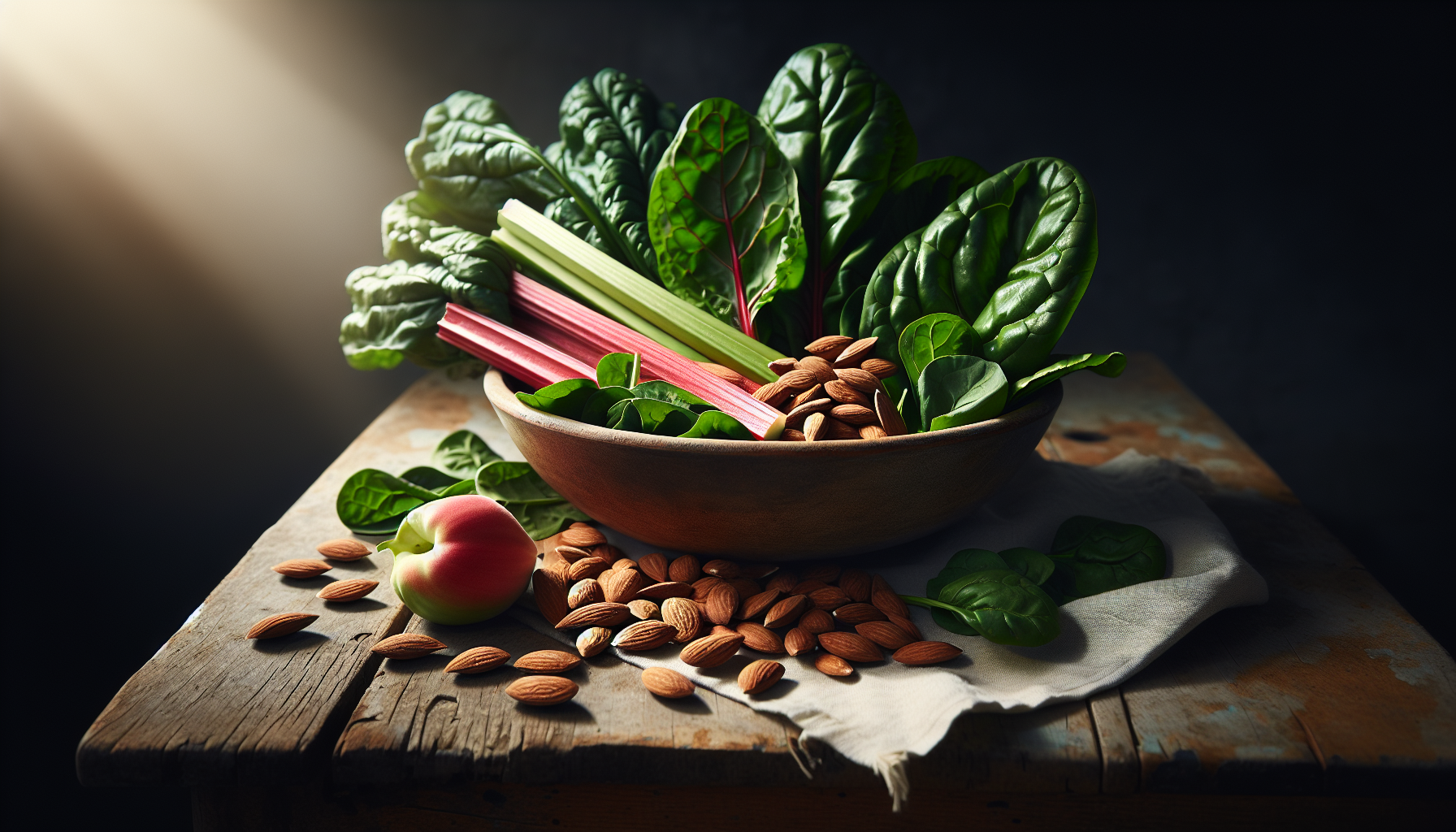Have you ever wondered why certain foods make your stomach feel uneasy? You might have heard of oxalates, those pesky compounds found in many foods that can affect your digestive health. Maybe you’ve noticed discomfort after eating spinach or almonds, and it left you questioning your gut’s response. Understanding how your gut deals with oxalates is essential for your overall health, and recognizing the signs of intolerance can lead you toward a more comfortable lifestyle.
What Are Oxalates?
Oxalates are naturally occurring compounds found in various plants. They can bind to minerals in the body, especially calcium, which can lead to the formation of crystals and even kidney stones in some individuals. Although many fruits and vegetables are good for you, those high in oxalates can be troublesome if your body doesn’t handle them well.
It’s interesting to note that your gut processes food differently from someone else’s. While some people can munch on spinach without a second thought, others might find their stomachs in turmoil. Understanding the implications of this can help you better tailor your diet to suit your needs.
The Connection Between Gut Health and Oxalate Tolerance
Your gut is the powerhouse of your digestive system; it’s responsible for breaking down food, absorbing nutrients, and eliminating waste. When it comes to oxalates, a healthy gut microbiome plays a significant role. Some beneficial bacteria can help break down oxalates, making it easier for your body to handle them.
If your gut health is compromised—whether from poor diet, stress, or antibiotic use—you may find yourself struggling with oxalate intolerance. The relationship between gut health and oxalate tolerance is intricate, and understanding it is the first step to feeling better.
Signs Your Gut Isn’t Handling Oxalates Well
Identifying the signs that your gut may not be coping with oxalates is crucial. Here are some key indicators that could suggest your gut is struggling:
1. Bloating and Gas
Have you ever felt uncomfortably full or experienced excessive gas after eating certain high-oxalate foods? If you find that bloating and gas frequently follow your meals, it might be a sign that your gut isn’t processing these compounds well.
Bloating occurs when your intestines gather excess gas or liquid, making you feel swollen. This symptom is especially common when your gut bacteria cannot effectively break down complex compounds.
| Symptom | Possible Cause |
|---|---|
| Bloating | Incomplete digestion of oxalates |
| Gas | Fermentation by gut bacteria |
2. Abdominal Discomfort
Does your stomach sometimes feel like a tight balloon? Abdominal discomfort can range from mild to severe, making it hard to enjoy meals. This symptom often indicates that your gut is reacting negatively to the oxalates you’re consuming.
Even some foods that are perceived as healthy can trigger this discomfort. Be mindful of how your body responds post-meal, particularly after consuming foods high in oxalates, and keep track of what you eat.
3. Constipation or Diarrhea
If your gut health is off-balance, it can manifest in your bathroom habits. Experiencing constipation or diarrhea after consuming oxalate-rich foods may suggest that your gut is unable to process them correctly.
A healthy gut should help maintain regular bowel movements. If you’re finding yourself running to the restroom more often or struggling to go, oxalates might be part of the problem.
| Symptoms | Implications |
|---|---|
| Constipation | Difficulty processing oxalates |
| Diarrhea | Overreaction to oxalate intake |
4. Skin Issues
Believe it or not, your gut health can influence your skin. Conditions like redness, rashes, or eczema flare-ups could be tied to your body’s reaction to oxalates. If you’ve been battling skin problems, it could be worth considering the role oxalates play in your diet.
When your gut isn’t functioning properly, toxins can build up in your body, reflecting on your skin. A healthy gut should help clear impurities, so when there’s a problem, it can show up as skin irritations.
5. Kidney Pain or Stones
For some individuals, oxalates are particularly notorious for leading to kidney stones. If you’ve experienced sharp pain in your back or abdomen, along with issues with urination, your kidneys might not be handling oxalates well.
While not everyone who eats high-oxalate foods will develop stones, if you know you’re prone to them or have experienced kidney pain, it might be time to evaluate your oxalate consumption more seriously.
| Symptom | Context |
|---|---|
| Kidney pain | Possible stone formation due to oxalates |
| Difficulty urinating | Potential obstruction from stones |
6. Fatigue
Feeling unusually tired or lethargic after meals can also be a sign of gut distress. Your body needs energy to digest food, and if oxalates are hindering that process, it could lead to fatigue.
Listen to your body. If you often feel drained after consuming certain foods, consider jotting down what you’ve eaten and the subsequent symptoms. This could provide valuable insight into your body’s relationship with oxalates.
Managing Oxalate Intake
Now that you recognize some signs that your gut may be struggling with oxalates, you might be wondering how to manage your intake. The good news is that with a little effort and awareness, you can navigate your diet more comfortably.
Understanding High-Oxalate Foods
Familiarizing yourself with which foods are high in oxalates can empower you to make better choices. Here’s a brief table of common high-oxalate foods:
| Food Group | Examples |
|---|---|
| Vegetables | Beets, spinach, Swiss chard |
| Nuts and Seeds | Almonds, cashews, peanuts |
| Fruits | Blackberries, kiwi, rhubarb |
| Grains | Quinoa, wheat bran, buckwheat |
| Legumes | Soybeans, black beans, lentils |
While this isn’t an exhaustive list, it highlights some of the most common offenders. If you suspect you’re struggling with oxalate intolerance, consider limiting these foods in your diet.
Optimizing Your Gut Health
To help your gut handle oxalates better, focus on nurturing your overall gut health. Here are some tips to consider:
1. Increase Fiber Intake
Incorporating more fiber-rich foods can aid in digestion and help regulate bowel movements. Fiber helps feed beneficial gut bacteria and can improve your body’s ability to process various compounds.
You can find fiber in foods like:
- Fruits (apples, bananas)
- Vegetables (broccoli, carrots)
- Whole grains (brown rice, oats)
2. Stay Hydrated
Water plays a crucial role in keeping your digestive system functioning smoothly. Staying adequately hydrated can help offset some of the effects of oxalates by diluting them and promoting regular urination.
3. Probiotics and Prebiotics
Consider adding probiotics and prebiotics to your diet. Probiotics are beneficial bacteria that can help rebalance your gut flora, while prebiotics are fibers that support the growth of these good bacteria. Options include yogurt, kefir, sauerkraut, and other fermented foods.
4. Monitor Your Diet
The simplest way to get a handle on how your body is responding to oxalates is by keeping a food diary. Note what you eat and any symptoms you experience. Over time, you can identify patterns that may help you adjust your diet accordingly.
When to Seek Professional Help
If you continue to experience adverse symptoms despite making dietary changes, it may be time to consult with a healthcare professional. A registered dietitian or nutritionist can guide you, helping tailor an eating plan specific to your needs.
They can also help identify any underlying issues affecting your gut health, which may be exacerbating your oxalate intolerance.
Conclusion
Taking the time to understand how oxalates affect your gut can lead you on a path to feeling better. By recognizing the signs your body is giving you, you can implement strategies to manage your oxalate intake and nurture your gut health effectively. Listening to your body and adjusting to its unique needs is vital for a balanced and healthy life. Remember, your journey to better gut health is personal—don’t hesitate to seek support along the way.





